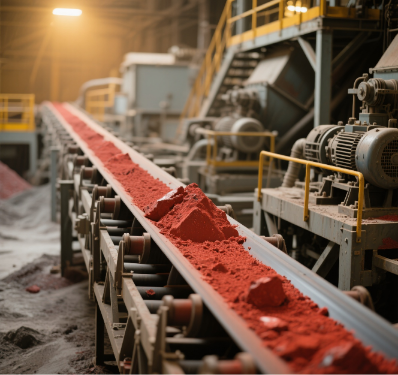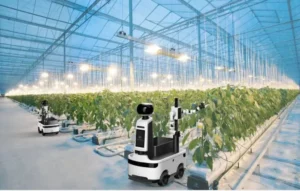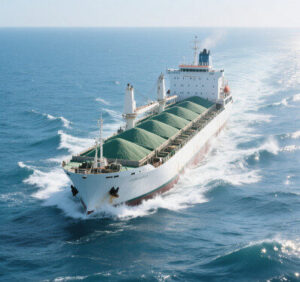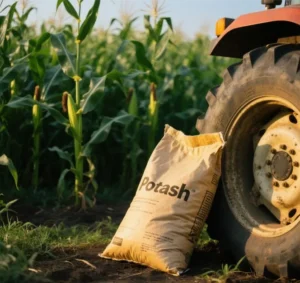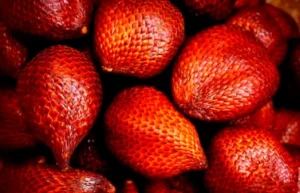Potash is a critical agricultural nutrient that plays a pivotal role in ensuring global food security. Since approximately 95% of global potash production is used for fertilizers, it is essential to understand its distribution, production, and market trends. This article explores the uneven distribution of potash resources around the world, the concentration of production capacities, supply-demand imbalances, and the emerging market trends that are shaping the future of the potash industry.
1. Uneven Global Distribution of Potash Resources
Potash resources are highly concentrated, creating an oligopolistic market structure. As of 2024, the world’s potash reserves exceed 4.8 billion metric tons, measured as potassium oxide(K₂O) equivalent. Canada, Russia, Belarus, and Laos dominate the global potash reserve landscape. Canada holds 1.1 billion metric tons, accounting for 22.9% of the global total. Laos has recently emerged as the second-largest reserve holder, surpassing Russia and Belarus, with 1 billion metric tons. This dramatic increase is due to extensive exploration by Chinese companies such as Zangge Mining and Asia-Potash International (API), which have significantly expanded Laos’s potash reserves.
2. Production Capacity and Supply-Demand Imbalance
A few multinational corporations dominate global potash production. Canada, Russia, and Belarus account for over 60% of the total output. Nutrien, the world’s largest potash producer, operates six mines in Saskatchewan and produces around 12 million tons of potash annually. Prior to the war in Ukraine, Uralkali, based in Russia, controlled approximately 20% of the global supply, significantly impacting the market. Belaruskali, based in Belarus, has had to reroute its exports to China due to EU sanctions, affecting trade routes. On the demand side, agricultural powerhouses such as China, Brazil, India, and the U.S. have the highest demand. For example, China consumes about 20% of the world’s potash but only produces 6.3 million tons, making it heavily reliant on imports. Brazil, with its acidic soils requiring substantial potassium supplementation, is the largest potash importer, using around eight million tons each year for its extensive agricultural operations.
| Country | Production (10 Thousand Tons K₂O) | Key Companies |
| Canada | 1,500 | Nutrien, Mosaic, BHP (Jansen Project) |
| Russia | 900 | Uralkali |
| Belarus | 700 | Belaruskali |
| China | 630 | Qinghai Salt Lake Potash |
| Laos | 150 | Asia-Potash International |
3. Emerging Production Hubs and China’s Strategic Shift
Laos has quickly become a key player in the potash market due to Chinese-backed projects. Asia-Potash International (API) currently produces 3 million tons of potash per year in Laos and plans to increase production to 5 million tons by 2025. Zangge Mining’s initial project, which is scheduled for completion in 2026, will produce 2 million tons of potash. Additionally, Kaiyuan Mining’s third KCl unit is expected to be operational by 2025-2026 and will produce 2 million tons of potash. These developments offer significant benefits for China. Since the opening of the China-Laos Railway in 2021, potash imports from Laos to China have increased, reducing transport costs and China’s reliance on Russia and Canada for potash supplies. Other regions, such as Brazil, are exploring partnerships with Russia and China to achieve fertilizer independence. New mines are expected to begin operating in Ethiopia and Spain after 2028.
4. Market Trends and Future Outlook
The potash market is undergoing dynamic changes. Prices are rebounding after dips in 2023, as evidenced by API’s 373.53% surge in net profit in Q1 of 2025. The market size is expected to increase from $20.17 billion in 2024 to $28.12 billion by 2030, reflecting a compound annual growth rate (CAGR) of 5.69%. Geopolitical influences continue to significantly impact the potash trade. Sanctions on Russia and Belarus have disrupted trade flows and led to economic challenges for these countries. For example, Belarus’s economy, which relies heavily on potash exports, has been forced to find alternative routes, such as rail exports to China. This increases transportation costs and potentially reduces profit margins. The Red Sea crisis has increased shipping costs, affecting producers such as ICL in Israel and APC in Jordan, who now face higher operational expenses and possible supply chain delays. Technological advancements and sustainability shifts are also influencing the industry. API’s adoption of smart mining with AI-driven, unmanned mining systems in partnership with Huawei is a notable example of this shift. Additionally, organic and slow-release fertilizers are gaining popularity in Europe and North America, reflecting a growing emphasis on sustainable agricultural practices.
Conclusion: A Transforming Global Potash Landscape
The potash industry is undergoing a significant transformation. Laos is emerging as a key supplier, joining traditional giants such as Canada, Russia, and Belarus. China’s strategic investments in Laos are reshaping its import dependencies, and geopolitical tensions continually reroute trade flows. Future growth in the potash industry depends on expanding production in regions like Laos and Africa to diversify supply chains; achieving technology-driven efficiency gains in mining and processing; and adopting sustainable practices to meet environmental regulations. Ensuring stable potash supplies remains crucial for agricultural economies’ food security, making the potash sector a focal point of global resource competition in the coming decade. However, the industry faces significant challenges, including potential environmental issues from increased mining activities and market volatility due to changing geopolitical landscapes. Continuous monitoring and adaptation strategies will be required to address these challenges and ensure a sustainable and stable future for the potash industry.


